Say “no” to noodle legs this ski season. The last thing you want is to hop off the ski lift and realize that you aren’t prepared to fly downhill and dodge trees, rocks, and other skiers. You’ll also, of course, want to minimize any potential for an injury. To make sure you’re ready to conquer the slopes this year, here are the nine best exercises for skiing to keep you prepped.


9 Prep Exercises for Skiing You Should Be Doing Right Now
1. For speed: sprints
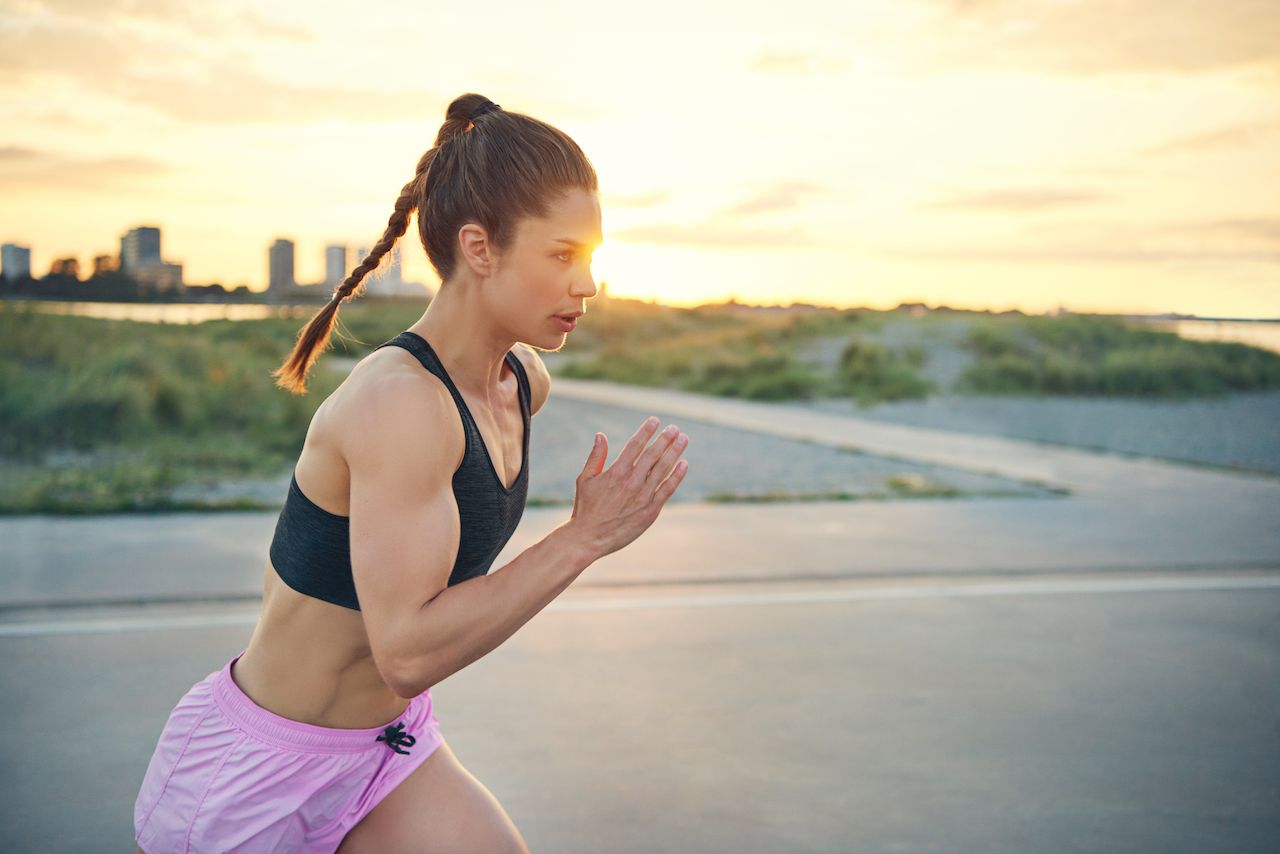
Photo: Flamingo Images/Shutterstock
First, the nitty-gritty. This might not be what you want to hear, but running will seriously improve your skiing performance. If you’ve never done sprints to prepare for ski season before, watch out, because you’ll surprise yourself this year. Sprints are a basic building block of skiing skills because they build speed, improve your anaerobic capacity, build strength and power in the legs, and increase your overall fitness level — all things that will benefit you on a ski course.
Try this sprint workout:
- 400-meter run
- 90 seconds rest
- 200-meter run
- 60 seconds rest
- 200-meter run
- 90 seconds rest
- 400-meter run
2. For endurance: long runs

Photo: Maridav/Shutterstock
If you plan on spending long hours skiing, you’ll need to amp up your endurance. Prepare by embarking on at least one long run each week leading up to ski season. Don’t take “long run” to mean you must run 10 miles or more; rather, interpret this as relative to your current endurance. Anything that pushes your limits can be an excellent skiing exercise, even if that’s only a mile or two. Ideally, you should work up to the point at which you can run at a moderate pace for 30 minutes without stopping.
3. For power: jumping lunges
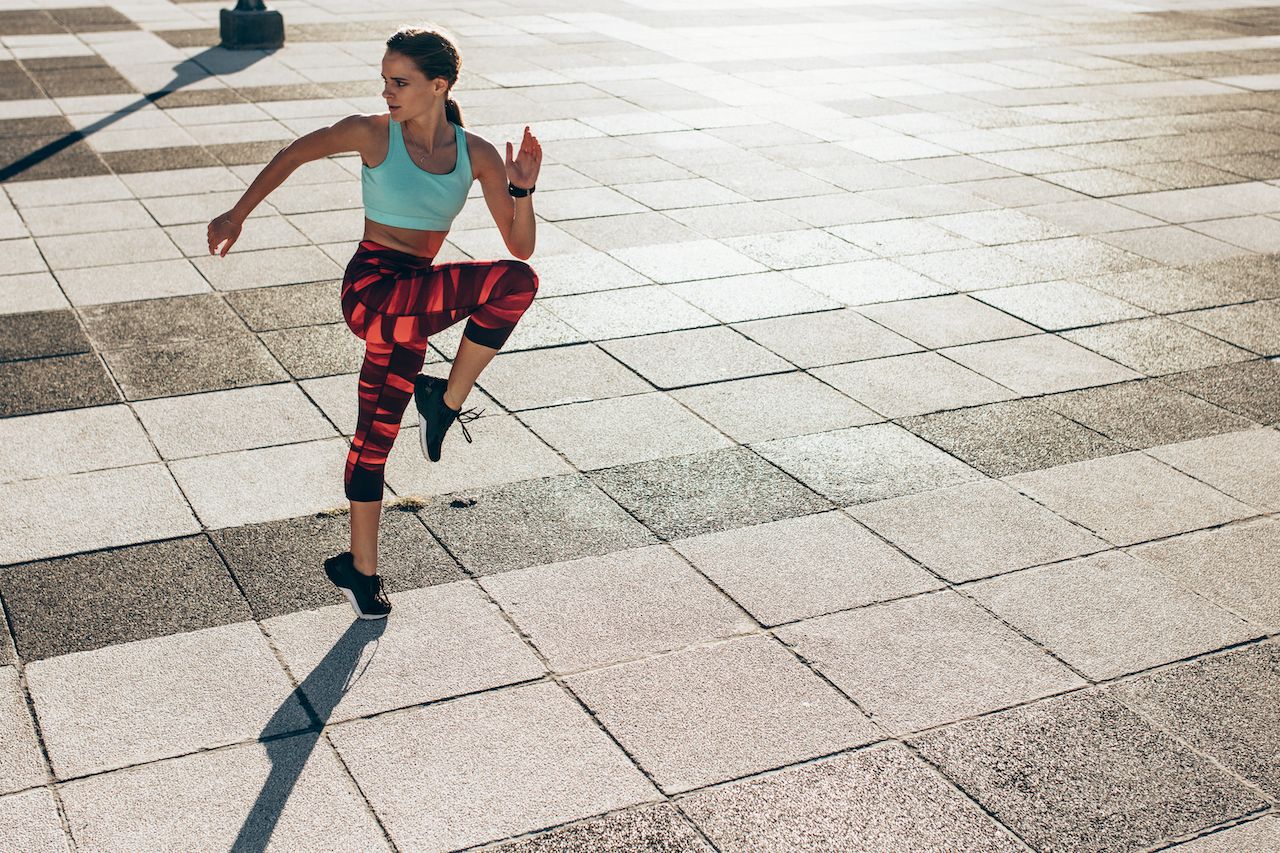
Photo: Jacob Lund/Shutterstock
This variation of the basic alternating lunge will increase your capabilities out on the slopes. They build power, for sure, but since jumping lunges are a unilateral exercise (one leg at a time), they’ll also challenge your balance and stability, both of which are essential for skiing. The plyometric aspect benefits your cardiovascular fitness, too.
Start by standing upright. Take a big step backward and lower your body until your knee touches the ground. Propel yourself out of the bottom position by jumping; quickly switch the position of your legs mid-air so you land with the opposite foot forward. Continue alternating legs for three sets of 10 to 20 reps.
4. For strength: weighted squats
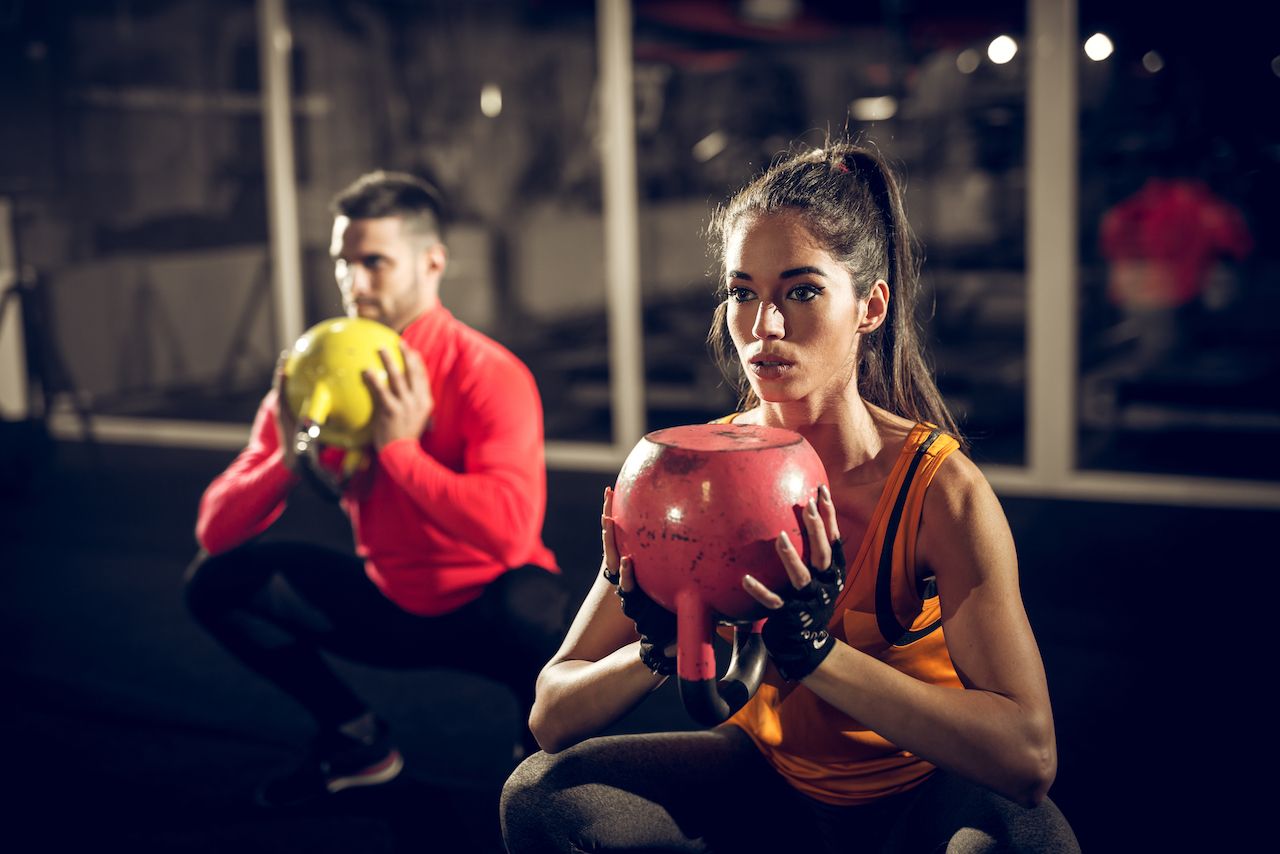
Photo: Dusan Petkovic/Shutterstock
You might think that squats only work your legs, but add some weight and you’ll be surprised at how much this move taxes your core and back. Any form of weight — barbell and plates, dumbbells, kettlebells, or even a weighted vest or backpack — can prepare you for skiing season.
To perform a squat, follow these steps:
- Stand with your feet about shoulder-width apart.
- Hinge at your hips and bend your knees to lower yourself into the squat. Keep your knees pointed forward or out — don’t let them cave in!
- Once you reach full depth, push through your heels to ascend back to the starting position.
- The squat is complete when you stand up with full extension of the hips.
5. For explosiveness: jump squats
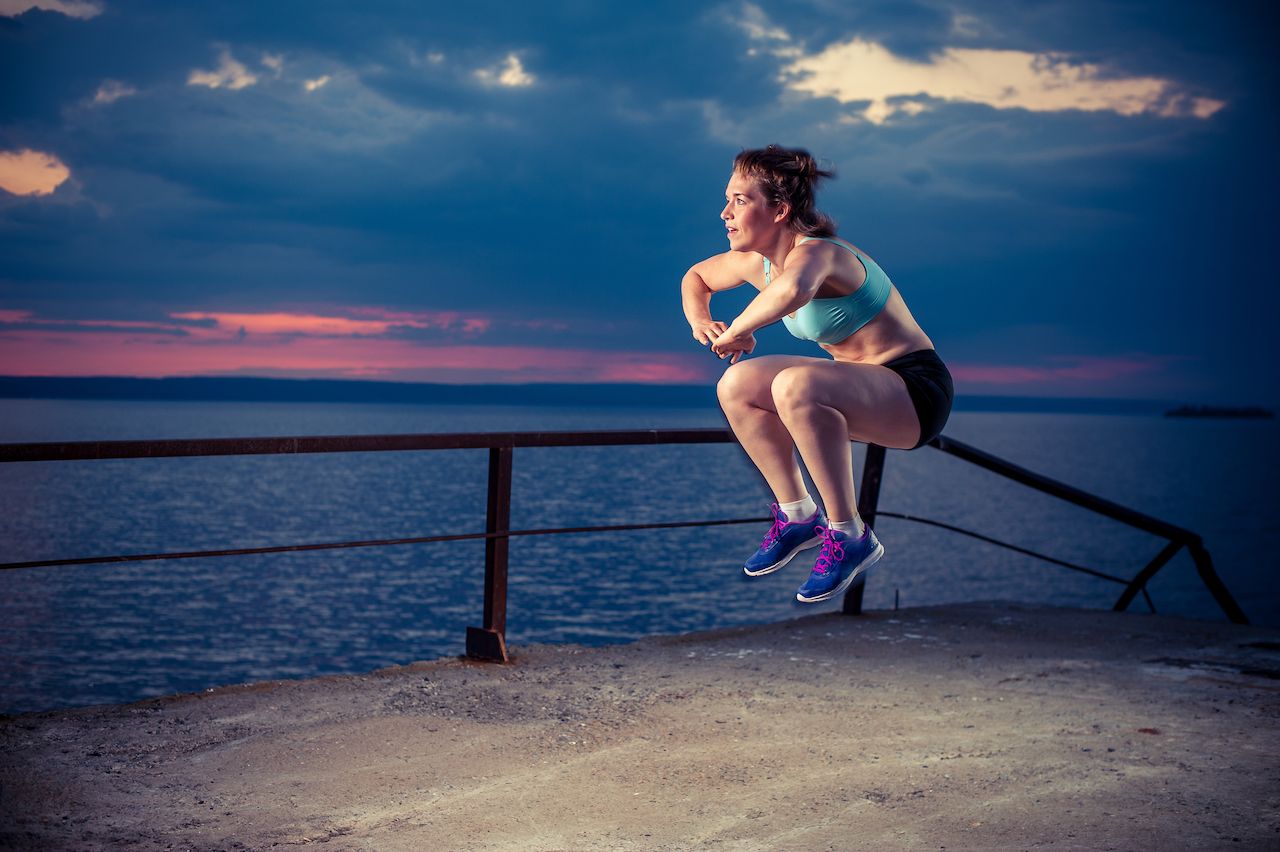
Photo: Paul Biryukov/Shutterstock
Jump squats offer the same suite of benefits that regular squats offer, but with an added bonus: extreme explosiveness. Many skiers forget that explosiveness is important to the sport of skiing, but the truth is that this key skill is what allows you to make sharp turns, propel yourself down flats, and absorb impact from landings.
To do jump squats, follow the same steps as listed above, but add one important component: As you come out of the bottom of the squat, forcefully launch yourself off the ground and point your toes, jumping as high as you can go. Do three sets of 10 to 20 reps.
6. For core strength: 360-degree plank
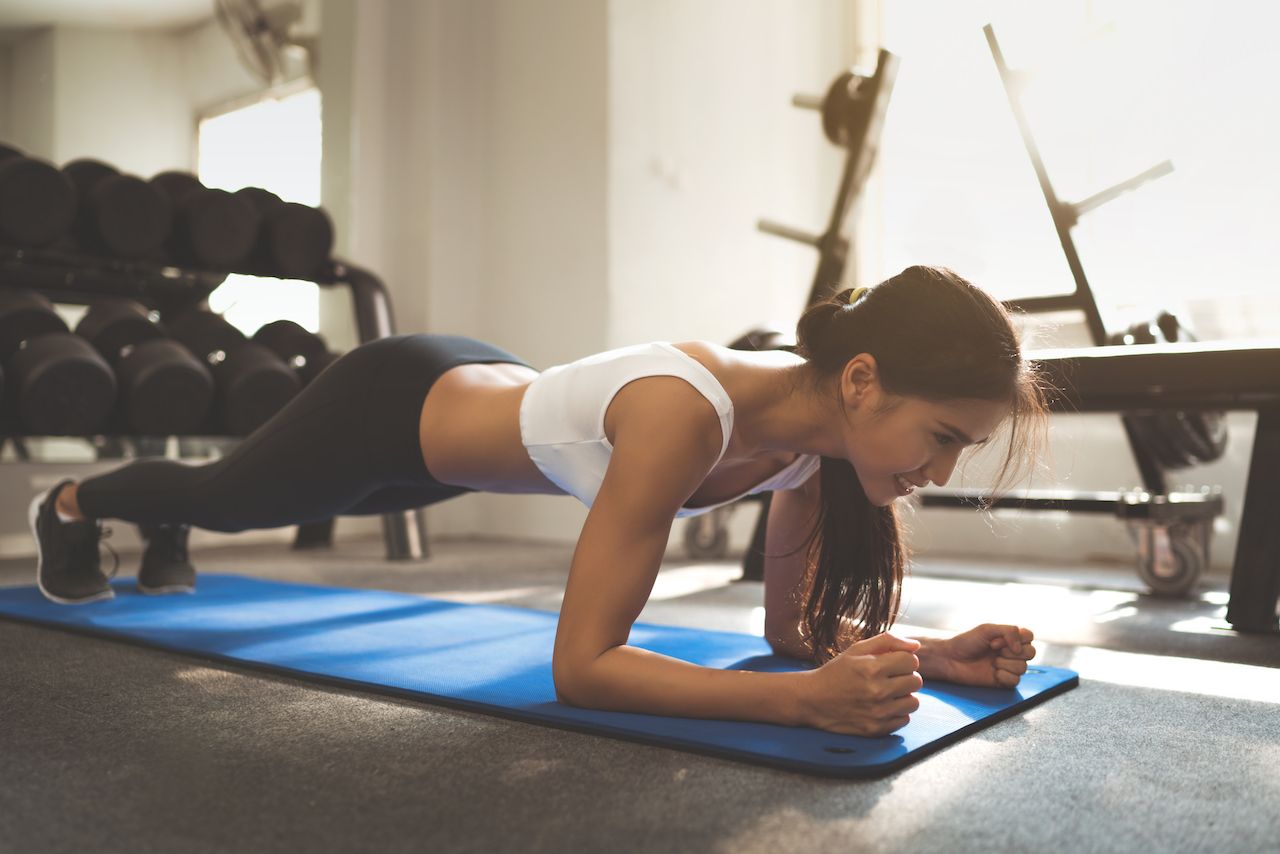
Photo: TORWAISTUDIO/Shutterstock
This plank variation is one of the best exercises for skiing to build your core strength. To perform the 360-degree plank, you’ll start with a typical elbow plank. Time yourself for 30 seconds and then, without lowering yourself to the ground, roll onto your left elbow to complete a 30-second side plank. Then, back to the middle for 30 more seconds. Finally, roll onto your right elbow for 30 seconds. If 30 seconds isn’t enough of a challenge, try timing yourself for one minute in each position.
7. For coordination: lateral hops
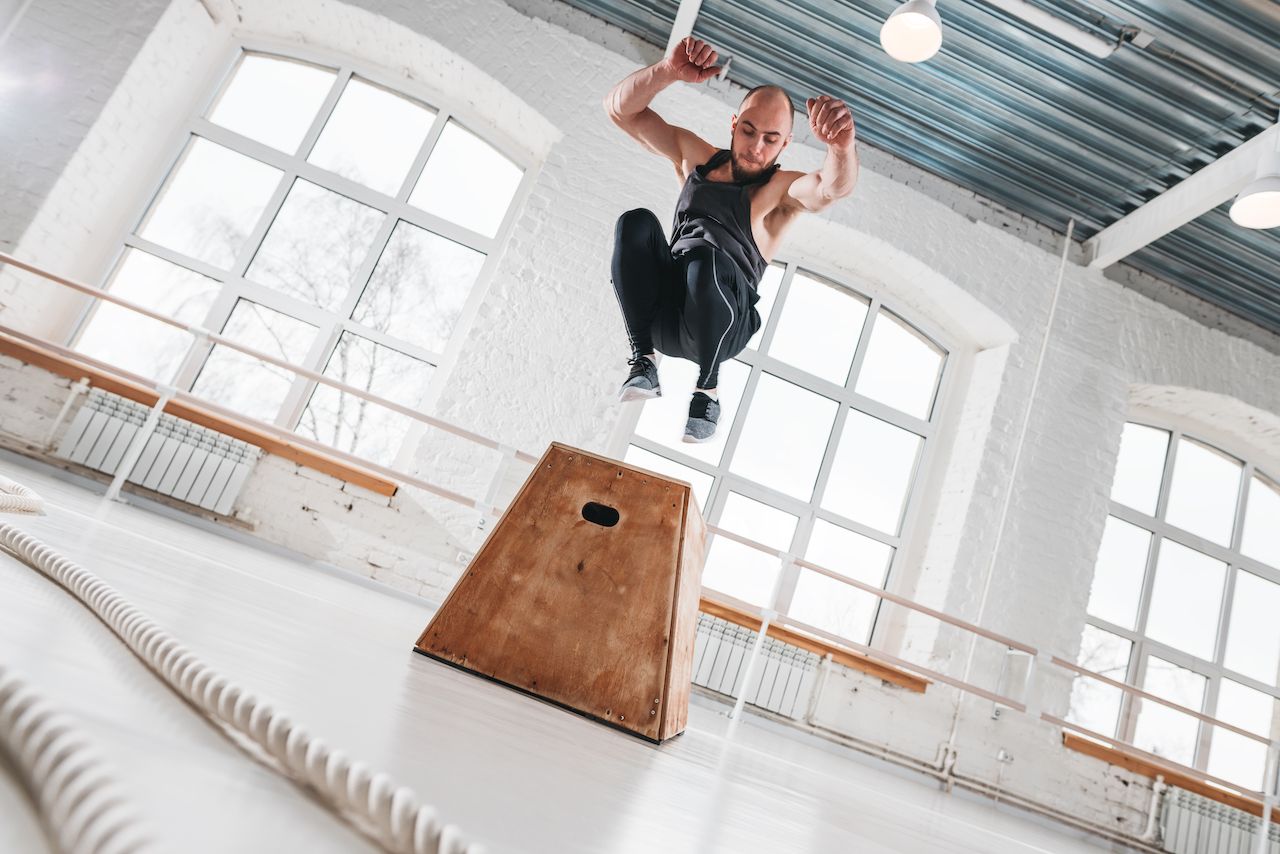
Photo: LeonidKos/Shutterstock
Without coordination, you can’t do too much on the slopes. You’ll need to have a lot of body awareness and know how to control your own weight while speeding downhill. Prepare with lateral hops. Place an object, such as a sandbag or box, on the floor. Stand next to the object, but not facing the object. Jump sideways across the object to land on the other side. The goal here is to land as softly and precisely as possible. Try not to wobble, fall, or slam the ground. For an extra challenge, try hopping or landing with one foot.
8. For balance: single-leg deadlifts

Photo: Nicholas Piccillo/Shutterstock
Like coordination, balance is a key skill out on the slopes. If you can’t balance, well, you probably can’t ski very well. Improve your balance with a tried-and-true move that will also strengthen your hamstrings and glutes: the single-leg deadlift.
To do this body-stabilizing exercise, first grab a kettlebell or dumbbell. Hold the weight in one hand. Standing on one leg, hinge your hips and send them backward. With a slight bend of the knee (just enough so that your knee isn’t locked), lower your torso until the weight taps the ground (or until your hamstring reaches the end of its range of motion). Using strength from your hamstrings and glutes, pull your torso back to the upright position.
9. For your upper body: Superman-to-pushup
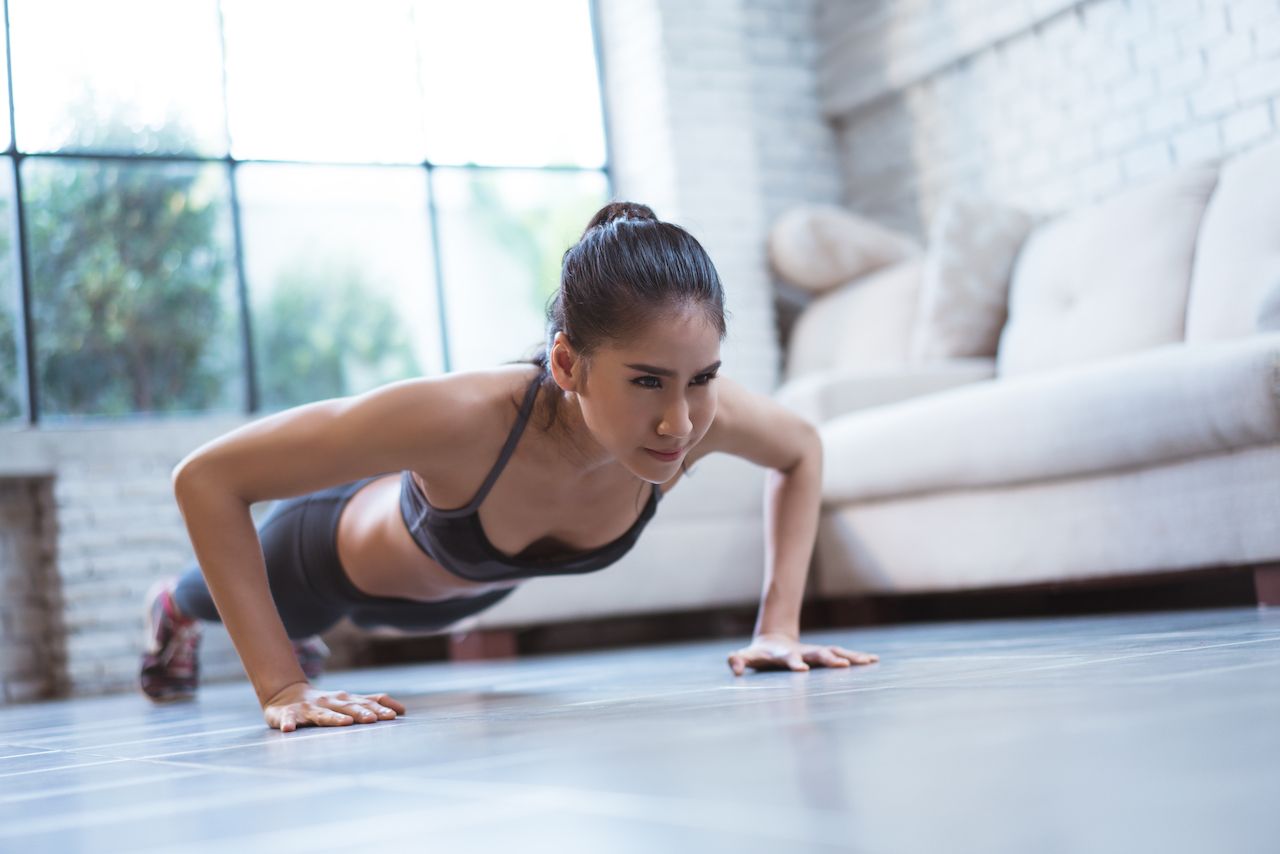
Photo: TORWAISTUDIO/Shutterstock
Skiing largely requires use of your lower body, yes, but don’t forget all of the work your arms do: They help push off your poles, keep you stabilized, and offer an extra element of balance. Work your chest, shoulders, triceps, biceps, and back muscles in one fluid move with the superman-to-pushup.
For this ski exercise, start by lying face down. Extend your arms overhead and simultaneously raise your chest and legs off the ground. Squeeze your upper back muscles, glutes, and hamstrings so that only your stomach and hips are making contact with the ground. Hold for two seconds, and then lower your extremities back to the ground. Next, bend your elbows and flex your feet so that you are in the bottom of a pushup. Perform a pushup, and then lower yourself back to the ground. This completes one rep.
Put it all together
There’s truly no “perfect” workout routine — a good one is whatever works for you — but you can put these ski exercises together for a weekly routine that, leading up to your first opportunity to go skiing this winter, will prepare you for whatever might come your way. Here’s how to do it:
- Monday: sprint workout
- Tuesday: upper-body and core circuit
- Wednesday: lower-body circuit
- Thursday: rest and stretch
- Friday: lower-body circuit
- Saturday: long run
- Sunday: Rest and stretch